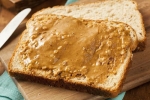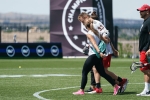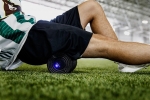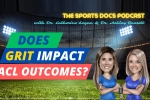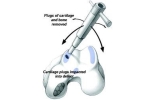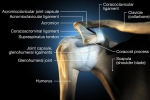Blog Archive
How Does Dr. Logan Use Force Plates in Clinic?
Contrary to what some might think, force plates do not replace the rehabilitation framework that practitioners are taught and use day-to-day. While there are many nuances, the most common reference points a sports medicine surgeon may use for decision-making in injury rehabilitation (other than physiological tissue healing time frames) –...
Does PRP Help Heal Hamstring Injuries?
Platelet-rich plasma (PRP) therapy is a medical treatment that involves the injection of a concentrated form of a patient's own blood, which contains a higher concentration of platelets than normal. Platelets play a role in the body's natural healing process. For hamstring injuries, including strains or tears, some individuals explore...
How Much Protein Do I Need After Knee Surgery?
Protein intake is important for recovery after knee surgery as it plays a crucial role in tissue repair and the healing process. Here are some general guidelines for protein intake after knee surgery: Adequate Protein Intake: Ensure that you are consuming an adequate amount of protein to support the repair...
Psychological Return to Sport with Dr. Catherine Logan
Psychological return to sport refers to the process of an athlete or individual reintegrating into their sport after a period of injury, hiatus, or other significant life event. This process involves not only physical rehabilitation but also addressing the psychological aspects that may impact an athlete's readiness to return to...
Sleep Recovery After Knee Surgery
Recovering from knee surgery can disrupt sleep due to discomfort, changes in mobility, and medication side effects. However, there are several strategies to improve sleep quality during the recovery period: Pain Management: Follow your healthcare provider's instructions for pain management, including taking prescribed pain medications as directed. Controlling pain can help...
How Do I Treat Iliotibial Band Syndrome?
Iliotibial Band Syndrome (ITBS), also known as IT Band Syndrome or ITB Syndrome, is a common overuse injury that affects the iliotibial band—a thick band of fibrous tissue that runs along the outside of the thigh, from the hip to the shin. The iliotibial band plays a role in stabilizing...
What is the Best Way to Recover after a Strength Workout?
Recovery after a strength workout is crucial for muscle repair and overall well-being. Here are some effective strategies: 1. **Protein Intake:** - Consume a protein-rich meal or snack within 30-60 minutes after your workout. This can be a combination of lean protein sources like chicken, fish, eggs, or plant-based options...
The Impact of Grit on Athlete's ACL Recovery
Researchers recently investigated grit in relation to outcomes following ACL surgery. Grit is the disposition to strive for long-term goals despite setbacks and challenges. ACL surgery recovery is a long journey and the author's postulated that an athlete's grit may predict postoperative outcomes across time. The author's primary purpose of...
OATS vs OCA for Cartilage Injuries of the Knee
We are often asked what is the difference between OATS and OCA. Here is a great overview provided by AAOS! Osteochondral Autograft Transplantation In osteochondral autograft transplantation, cartilage is transferred from one part of the joint to another. The procedure, which can be done with an arthroscope or using an...
Rehab Tips & Tricks after Shoulder Stabilization Surgery
On today’s episode we’re focusing on post-op rehab after shoulder stabilization surgery with Dr. Yoni Rosenblatt, a physical therapist at True Sports PT in Baltimore, Maryland. We have some great articles for you that contribute well to our conversation on shoulder instability rehabilitation. As always, links to all of the...



